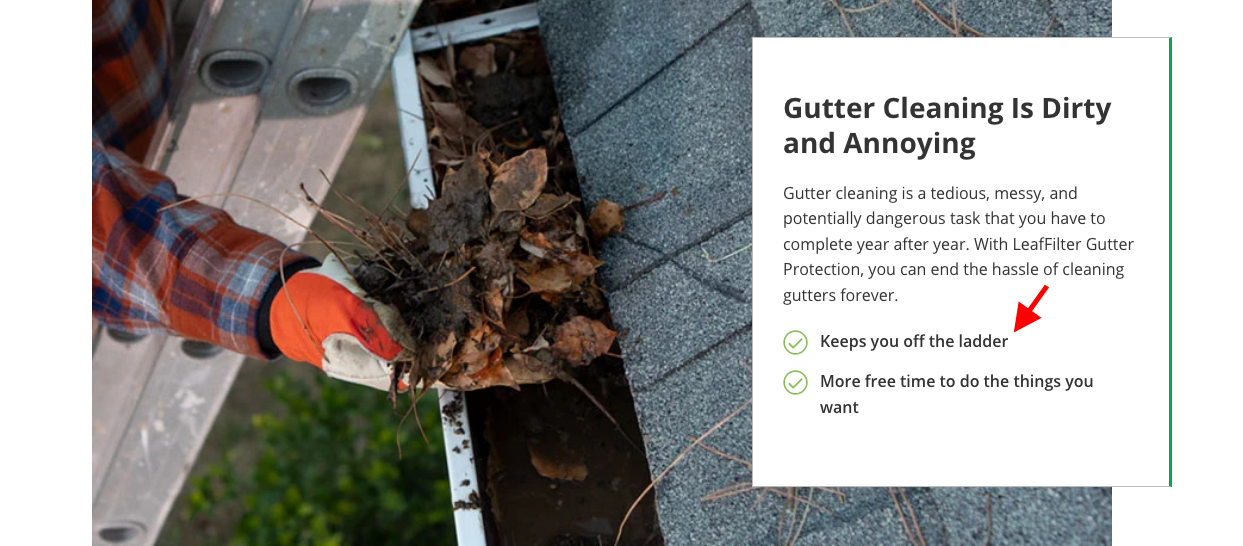
LeafFilter Gutter Guard: ‘Keeps You Off the Ladder’
Gutter cleaning is dirty and annoying. So is deceptive marketing.
A consumer didn’t light up with joy after purchasing a couple items from this holiday décor retailer.
A TINA.org reader purchased a pre-lit wreath from Balsam Hill thinking that the lights would be warm white or yellow like they are in the picture on the website.
Instead, the lights shone bright white. Our reader also purchased two potted trees from Balsam Hill that were pictured on the website with the same warm white/yellow lights and …drumroll please … they also lit up bright white.
Then, when he started the return process, Balsam Hill said he had to pay $30 to send the three items back because the company’s return/exchange policy only waives return fees for damaged or defective items. The company does not waive return fees if products do not arrive as shown and advertised on the Balsam Hill website. The company stood by this policy even after our reader explained that the website description for the items just says “Clear LED.”
There’s also a “Light Guide” linked next to the product description that in spite of its name isn’t very illuminating. The guide lists a variety of bulbs that sound like cell phone plans (LED, Micro LED, UltraBright Micro LED, to name a few), but only three types of “colors”: clear, multicolor and color and clear. Not to mention the two lights pictured at the top of the guide, Clear Incandescent and Candlelight LED, are indistinguishable.
Company responds
In response to a request for comment, Balsam Hill said its Clear LED lights, which the company said are also sometimes described as Candlelight Clear LED (another name to remember), do in fact emit a “soft, warm white glow, reminiscent of traditional incandescent bulbs.” But that wasn’t our reader’s experience.
Balsam Hill said it would “take this feedback and share it with our team internally to make improvements and updates to our product pages.”
The company offered to waive our reader’s return fees. Before we reached out, the best Balsam Hill said it could do for our reader was to offer him a coupon for 20 percent off, meaning he would have to do more business with the company in order to receive any compensation. Who does that really benefit?
Find more of our coverage on holiday shopping hazards here.
Our Ad Alerts are not just about false and deceptive marketing issues, but may also be about ads that, although not necessarily deceptive, should be viewed with caution. Ad Alerts can also be about single issues and may not include a comprehensive list of all marketing issues relating to the brand discussed.
Gutter cleaning is dirty and annoying. So is deceptive marketing.
It’s safe to say this ad makes some misleading claims.
FTC publishes first closing letters since Made in USA Labeling Rule went into effect in August.

